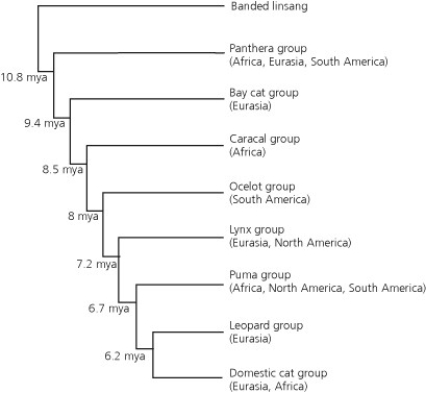Multiple Choice
The family Felidae (cats) is distributed across Africa, Eurasia, North America, and South America and is hypothesized to have eight major lineages (Panthera, bay cat, caracal, ocelot, lynx, puma, leopard, and domestic cat groups) as shown in this phylogenetic tree, constructed from DNA sequences. Scientists used a molecular clock and fossil evidence to date the divergence of each group. The dates of divergence are provided in the accompanying figure.

-Which groups would be expected to have the greatest number of genetic differences?
A) Domestic cat and leopard groups
B) Puma and ocelot groups
C) Leopard and lynx groups
D) Bay cat and domestic cat groups
Correct Answer:

Verified
Correct Answer:
Verified
Q65: Earth's continents and seafloors together form a
Q66: You find the frozen remains of a
Q67: The Mesozoic era is often called the
Q68: Geologists have evidence that over the past
Q69: Structures that evolved from the same structure
Q71: Ever since Darwin, systematics has tried to<br>A)
Q72: Divergence time estimates based on molecular clocks
Q73: The branching "tree of life" analogy<br>A) accurately
Q74: In 1942 a scientist testing part of
Q75: Molecular data can be used to assess